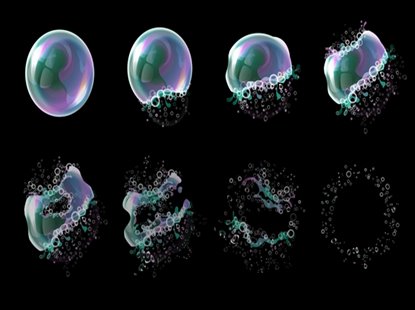Benefits of Using Defoamers to Enhance Operational Efficiency
Benefits of Using Defoamers to Enhance Operational Efficiency
Blog Article
Selecting the Right Defoamer for Your Particular Application Demands
Selecting the ideal defoamer for specific application demands is a nuanced process that requires mindful factor to consider of numerous elements, such as the foam operating, kind, and tool conditions. Comprehending the subtleties of defoamer performance-- including rate and perseverance-- while also accounting for ecological and governing variables is vital.
Comprehending Foam Development
Foam formation happens when gas is caught within a liquid, producing a steady framework of bubbles. This phenomenon can significantly impact numerous industrial processes, particularly in sectors such as food manufacturing, pharmaceuticals, and wastewater therapy. The presence of foam can impede blending, minimize product top quality, and also bring about operational inadequacies.
Foam typically develops as a result of a combination of variables, including surface-active representatives, frustration, and the characteristics of the fluid phase. Surfactants lower the surface area tension of the liquid, helping with the development of bubbles that can support and integrate. Agitation, whether from mechanical mixing or gas introduction, improves bubble formation, resulting in boosted foam quantity.
Recognizing the auto mechanics of foam formation is essential for industries aiming to maximize their procedures. By recognizing the specific conditions that promote foam generation, companies can implement strategies to minimize its impacts. This expertise lays the groundwork for selecting appropriate defoaming representatives that successfully target the distinct obstacles positioned by foam in different applications. Consequently, an extensive understanding of foam development is important for improving performance and keeping item stability throughout numerous markets.
Sorts Of Defoamers Available
Various sorts of defoamers are offered to attend to the difficulties posed by foam in commercial applications. defoamers. Extensively categorized, defoamers come under three categories: silicone-based, non-silicone-based, and natural defoamers
Silicone-based defoamers are renowned for their performance and security throughout a large range of temperature levels and pH levels. They are normally utilized in applications where strong foam reductions is necessary, such as in adhesives, coatings, and paints. Their low surface area tension enables quick foam collapse.
Non-silicone-based defoamers, frequently made from natural substances, use an alternative for applications sensitive to silicone deposits. These defoamers can be additional split right into polyether and ester types, each customized to satisfy particular formula demands. Non-silicone defoamers are regularly made use of in food processing and personal treatment items due to their compatibility with various formulations.
Natural defoamers, stemmed from plant or animal sources, are getting traction as a result of their environment-friendly profile. These items are particularly appealing in applications where governing compliance and sustainability are vital, such as in agrochemicals and biotechnology.
Choosing the appropriate sort of defoamer is crucial for enhancing efficiency and guaranteeing compatibility with specific applications.
Trick Application Considerations
When selecting a defoamer, it is essential to think about the certain application needs to make certain ideal efficiency. defoamers. Various sectors have distinct demands, such as food handling, drugs, or wastewater treatment, and each application might need special defoaming residential properties
Secret elements to examine consist of the medium in which the defoamer will be used, whether it is water-based, oil-based, or a combination thereof. The temperature and pH degrees of the application can additionally substantially affect the efficiency of a defoamer. Furthermore, compatibility with other chemicals present in the system is critical to protect against damaging responses that could compromise performance.
An additional vital consideration is the foaming habits of the specific system. Comprehending whether the foam creates promptly or slowly can direct the choice of a defoamer that targets the origin cause properly. The wanted speed of defoaming can affect the selection, as some applications call for rapid activity while others might tolerate slower defoaming processes.
Last but not least, environmental and regulative considerations must not be neglected, specifically in sectors with strict compliance needs. Selecting this website a defoamer that lines up with these aspects makes certain both performance and safety Read Full Article in the application.

Performance Screening Techniques
Examining the performance of a defoamer needs an organized strategy to screening that precisely determines its efficiency in particular applications. Various performance testing techniques can be utilized to ascertain the optimal defoamer for a provided formula.
One usual method is the bubble test, which reviews the defoamer's ability to decrease foam volume over time. This examination includes generating a steady foam and after that adding the defoamer to observe the rate of foam collapse.

Ultimately, choosing the suitable performance screening method depends upon the specific application and the sort of foam being dealt with. Each approach provides valuable information that can guide formula changes and boost the efficiency of the defoamer in practical applications.
Finest Practices for Option


Next, take into consideration the defoamer's performance in regards to speed of action and persistence. A quick-acting defoamer may be necessary for processes where rapid foam reductions is important, while an extra persistent solution might be needed for long term foam control. Additionally, assess the ecological impact of the defoamer, including its biodegradability and any type of regulatory conformity needs.
Conduct trials with selected defoamers to identify their effectiveness in real-world conditions. By sticking to these ideal practices, you can improve foam control efficiency and make sure the durability of your useful link processes.
Conclusion
In summary, selecting the appropriate defoamer demands a thorough evaluation of different elements, consisting of foam kind, tool, operating conditions, and ecological considerations. Recognizing the distinct qualities of foam formation and the readily available defoamer alternatives is important.
Choosing the ideal defoamer for specific application demands is a nuanced procedure that demands careful consideration of numerous factors, such as the foam medium, operating, and type problems.Picking the best defoamer is important for achieving optimal efficiency in foam control applications. A quick-acting defoamer might be needed for processes where fast foam reductions is important, while an extra persistent solution could be required for extended foam control.In summary, selecting the proper defoamer demands a detailed examination of different factors, including foam type, medium, operating problems, and ecological factors to consider. Comprehending the special qualities of foam formation and the offered defoamer alternatives is critical.
Report this page